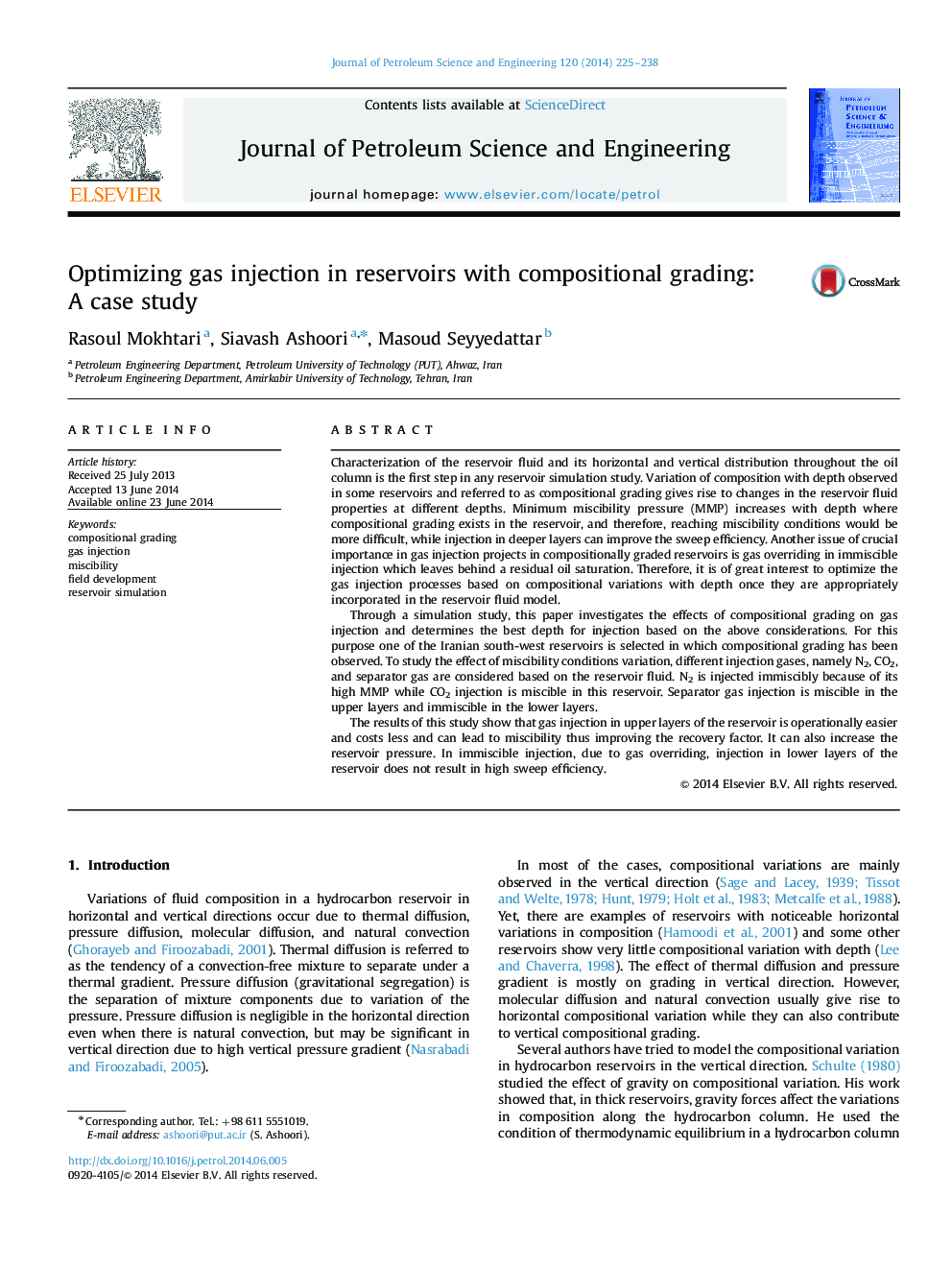| کد مقاله | کد نشریه | سال انتشار | مقاله انگلیسی | نسخه تمام متن |
|---|---|---|---|---|
| 1755047 | 1522821 | 2014 | 14 صفحه PDF | دانلود رایگان |
• Gas injection in upper parts of the reservoir can lead to miscibility.
• Gas injection in lower parts of the reservoir can lead to an immiscible injection.
• Injection into the miscible interval would result in the highest recovery factor.
• Injection into the miscible interval would result in the longest production plateau.
• There is an optimum injection interval for any compositional grading reservoirs.
Characterization of the reservoir fluid and its horizontal and vertical distribution throughout the oil column is the first step in any reservoir simulation study. Variation of composition with depth observed in some reservoirs and referred to as compositional grading gives rise to changes in the reservoir fluid properties at different depths. Minimum miscibility pressure (MMP) increases with depth where compositional grading exists in the reservoir, and therefore, reaching miscibility conditions would be more difficult, while injection in deeper layers can improve the sweep efficiency. Another issue of crucial importance in gas injection projects in compositionally graded reservoirs is gas overriding in immiscible injection which leaves behind a residual oil saturation. Therefore, it is of great interest to optimize the gas injection processes based on compositional variations with depth once they are appropriately incorporated in the reservoir fluid model.Through a simulation study, this paper investigates the effects of compositional grading on gas injection and determines the best depth for injection based on the above considerations. For this purpose one of the Iranian south-west reservoirs is selected in which compositional grading has been observed. To study the effect of miscibility conditions variation, different injection gases, namely N2, CO2, and separator gas are considered based on the reservoir fluid. N2 is injected immiscibly because of its high MMP while CO2 injection is miscible in this reservoir. Separator gas injection is miscible in the upper layers and immiscible in the lower layers.The results of this study show that gas injection in upper layers of the reservoir is operationally easier and costs less and can lead to miscibility thus improving the recovery factor. It can also increase the reservoir pressure. In immiscible injection, due to gas overriding, injection in lower layers of the reservoir does not result in high sweep efficiency.
Journal: Journal of Petroleum Science and Engineering - Volume 120, August 2014, Pages 225–238
